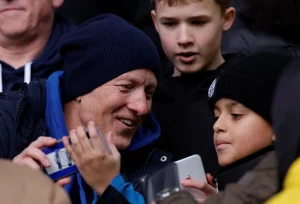Birmingham City are in the third tier next season for the first time in 30 years – and there are plenty of changes to be aware of

Birmingham City defeated Norwich City at St Andrew’s on the penultimate day of the season, but their relegation to League One was officially confirmed on Saturday. Blackburn Rovers, Plymouth Argyle, and Sheffield Wednesday were all in the relegation mix, and Blues made sure they couldn’t lose, which they duly did elsewhere. Blues, who have had a difficult campaign, will now play in League One despite only having 50 points overall.
The drop from the second tier to the third carries difficulties more related to the calendar over the course of the season, but relegation from the Premier League to the Championship carries well-documented financial difficulties to overcome, such is the size of the slice of pie you receive when dining at English football’s top table.
Before the Blues can really hit the reset button this summer, a number of problems need to be fixed and questions need to be addressed. First and foremost, information regarding Tony Mowbray’s health and well-being is necessary. It is hoped that he will be able to resume work in time for the preseason. Numerous players’ fates will also be scrutinised at this point. What does League One hold for the Blues, and how will it be different from the Championship?
The Football Association Cup
Teams from the Premier League and Championship will normally advance to the FA Cup’s third round. This round falls on the first weekend of January, a date that many fans nationwide look forward to and is linked to massive killings.
But the Blues’ FA Cup campaign will start considerably sooner after relegation; they’ll play in the world’s oldest football competition in the first round proper, which usually happens in early November. The Blues must negotiate two ties—without replays—to advance to the third round in January. The second round of the cup typically takes place on the first weekend in December.
The Football League Trophy
This competition has had a fair variety of sponsors throughout the years, including Checkatrade, Papa John’s, Johnstone’s Paint, Sherpa Van, Leyland DAF, and Auto Windscreens. Naturally, the Blues have won the trophy twice; the most recent victory came in 1995 at Wembley when Paul Tait scored in stoppage time. Peterborough United, who won the trophy last month, is the current holder.
There are 64 teams in the first round, comprising 16 academy teams from the top two tiers and 48 teams from Leagues One and Two. The competition, which is divided into 16 groups of four, usually starts in September. In the group stage, penalties are used if the game ends in a draw. The victorious team receives two points while the loser team receives one.
Some major teams, including Portsmouth, Coventry City, and Sunderland, have placed their names on the trophy in recent years. If Bluenoses do well in the competition, they may spend a day at Wembley at the end of the next season. However, there will be more games to play the following term.
International vacations
To put it simply, Blues could play during the international breaks. For fans who don’t enjoy those boring autumnal weekends when club football takes a backseat to the national teams, this would be a welcome change. For the clubs at the bottom of the pyramid, there is no respite while the Premier League and Championship are suspended.
Having said that, the Blues would probably have enough international players as things are right now to be able to ask for a postponement if necessary.Jordan James, Paik Seung-ho, Juninho Bacuna, and Krystian Bielik frequently represent their respective nations.
When three or more players are called up for their respective national teams, the EFL rules allow for the request of a postponement. Blues could play through such breaks, depending on how their roster looks and, of course, how the opponent handles call-ups on those specific weekends. Less midweek games would result from it.
Technology used at goal lines
Ironically, goalline technology is only available for League One and League Two games during the playoffs. This will be the first season since Hawk-Eye’s inception that Blues won’t benefit from technology, even though Blues and St Andrew’s have had access to it during their stay in the Championship.
It turns out that the lower one goes in the leagues, the harder the task becomes for officials, whose job is already very difficult. “I’d have thought with the money in football they could provide watches for the officials, so when the ball goes over the line everyone knows,” Mansfield Town manager Nigel Clough stated recently.
The FFP of Leagues One and Two is essentially SCMP. If Blues are smart, they could be able to use Knighthead’s money at this point. There is a cap on the percentage of turnover that can be used for player salaries (a recently relegated club can spend no more than 75 percent of its revenue on player wages), but there are no restrictions on how much a team can lose or spend on transfer fees. Rich team owners in lower levels therefore have more influence and freedom.
Turnover includes money collected from player sales as well as equity injections and donations made to the clubs by owners.
Each summer, a team is required to submit a turnover prediction for the next season, which includes the club’s expectations for midway through the campaign. Any significant adjustments to revenue or expenses would need to be justified.
GET MORE NEWS HERE


